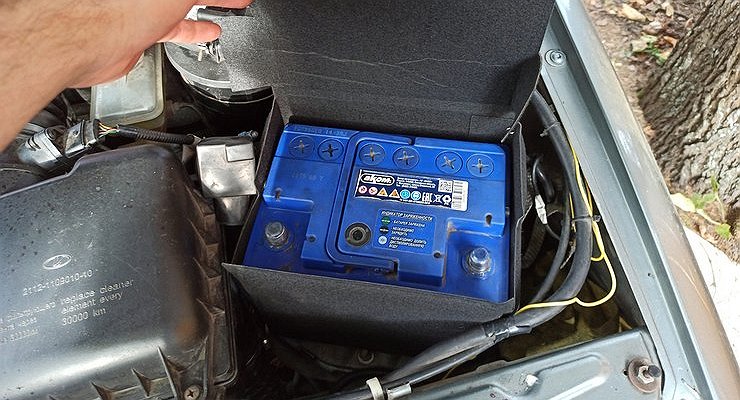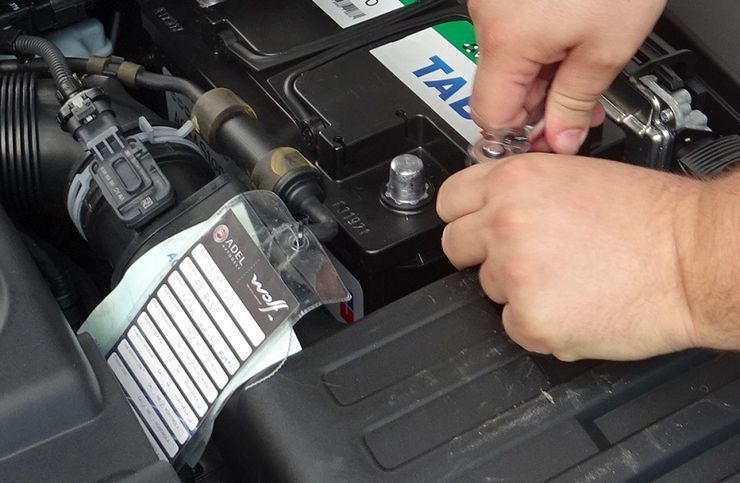Why a car battery can explode even in mild frost
- January 26, 2023
- 0
In the winter, the battery of the car is put under extra strain. The result is frequent battery discharges. However, the problem can be much more serious than
In the winter, the battery of the car is put under extra strain. The result is frequent battery discharges. However, the problem can be much more serious than

Recall that the “charger” consists of plate packs immersed in the electrolyte and a plastic case. This case is quite durable and can even withstand a fall from a height of one meter. But much more dangerous internal processes.
The fact is that over time, gases accumulate in the battery, especially if it is periodically charged from an external power source. This leads to the boiling of the electrolyte and the release of hydrogen. It mixes with oxygen, resulting in an explosive mixture. One spark is enough to explode.
Knowing this, manufacturers make two ventilation holes in the battery case. But some citizens forget to pull the plugs. Usually in a hurry, when the battery is dead in the cold and you need to buy and install a new one. Or they just close the vent to “wrap up” the battery for the cold weather. The result is a rapid concentration of gases in the body.
When the thaw comes and it is not so cold outside, citizens make intensive use of the car. For example, she stood tall and should “run”. In this case, any “wandering” spark leads to detonation. After a strong “thump” under the hood, plastic fragments of the battery walls and leaked electrolyte are visible. If he gets on the wiring, he will “eat” it at the moment.
Another typical situation. After severe frosts have passed, and the “weakened” battery barely turns the starter, the car is often “lightened” from another car. Sparks when connecting “crocodiles” also lead to an explosion.
And sometimes it’s quite “difficult”. Temperature fluctuations cause voltage spikes in the vehicle’s on-board system. And usually when there are some malfunctions. As a result of the fact that the regulator installed on the generator “jumps”, it begins to produce a voltage above the prescribed 14.7 volts. For example, the battery can boil and explode on the way. You are lucky if the “glitches” in the wiring are corrected in advance by the on-board computer and give an error message. Then you can stop and inspect the engine compartment. And if not, then you need to call a tow truck and drag the “iron horse” to the service.
To avoid problems, it is enough to regularly inspect the battery for “bloating”, clean the “bleeders” from dirt and monitor the amount of electrolyte, preventing it from falling below normal. There is nothing difficult about this.

Recall that the “charger” consists of plate packs immersed in the electrolyte and a plastic case. This case is quite durable and can even withstand a fall from a height of one meter. But much more dangerous internal processes.
The fact is that over time, gases accumulate in the battery, especially if it is periodically charged from an external power source. This leads to the boiling of the electrolyte and the release of hydrogen. It mixes with oxygen, resulting in an explosive mixture. One spark is enough to explode.
Knowing this, manufacturers make two ventilation holes in the battery case. But some citizens forget to pull the plugs. Usually in a hurry, when the battery is dead in the cold and you need to buy and install a new one. Or they just close the vent to “wrap up” the battery for the cold weather. The result is a rapid concentration of gases in the body.
When the thaw comes and it is not so cold outside, citizens make intensive use of the car. For example, she stood tall and should “run”. In this case, any “wandering” spark leads to detonation. After a strong “thump” under the hood, plastic fragments of the battery walls and leaked electrolyte are visible. If he gets on the wiring, he will “eat” it at the moment.
Another typical situation. After severe frosts have passed, and the “weakened” battery barely turns the starter, the car is often “lightened” from another car. Sparks when connecting “crocodiles” also lead to an explosion.
And sometimes it’s quite “difficult”. Temperature fluctuations cause voltage spikes in the vehicle’s on-board system. And usually when there are some malfunctions. As a result of the fact that the regulator installed on the generator “jumps”, it begins to produce a voltage above the prescribed 14.7 volts. For example, the battery can boil and explode on the way. You are lucky if the “glitches” in the wiring are corrected in advance by the on-board computer and give an error message. Then you can stop and inspect the engine compartment. And if not, then you need to call a tow truck and drag the “iron horse” to the service.
To avoid problems, it is enough to regularly inspect the battery for “bloating”, clean the “bleeders” from dirt and monitor the amount of electrolyte, preventing it from falling below normal. There is nothing difficult about this.
Source: Avto Vzglyad
Donald Salinas is an experienced automobile journalist and writer for Div Bracket. He brings his readers the latest news and developments from the world of automobiles, offering a unique and knowledgeable perspective on the latest trends and innovations in the automotive industry.